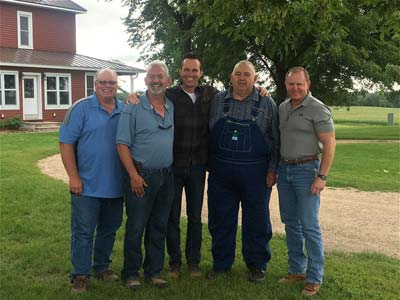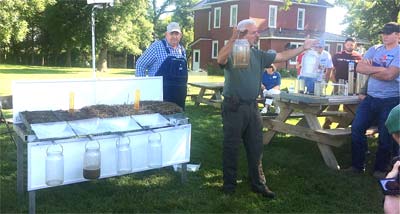The Roots of the General Mills Regenerative Agriculture Program
By:
K. Gregg Elliott Regenerative agriculture is a set of practices focused on building long-term soil health, which result in healthier, more resilient soil systems that may ultimately sequester more carbon.
Regenerative agriculture is a set of practices focused on building long-term soil health, which result in healthier, more resilient soil systems that may ultimately sequester more carbon.
In 2018 Jay Watson and Steve Rosenzweig attended one of the academies and came away energized by what they had learned. Since they just happened to be sustainability manager and lead agronomist, respectively, for General Mills, their excitement has resulted in some major changes for America’s food giants.
Watson and Rosenzweig decided that they wanted the suppliers for General Mills to move in the direction of regenerative ag. Thus began the planning for a pilot project among some of General Mills’ oat producers. In spring of 2019, General Mills recruited 45 farmers from a wide variety of backgrounds to participate in the project. They purposely selected a diverse mix of farmers both conventional and organic, beginning and experienced, with operations ranging from several hundred to tens of thousands of acres located in Saskatchewan, Manitoba and North Dakota.
General Mills RegenAg
The farmers are learning the basics at SHA workshops. Working alongside consulting agronomists, they are gaining in-depth insights into their operations, through soil testing, quantification of soil carbon, and measurements of biodiversity, just to name a few. General Mills is covering the cost of both the testing and their education, which is guiding the producers in their movement along the path of regenerative ag: what cover crops to plant, and when? How to plant without tilling? How to incorporate livestock? How, how, how?
 The consulting agronomists on the project come from Understanding Ag, a for-profit endeavor also founded by the peripatetic Gabe Brown and his partners! Dr. Jonathan Lundgren is conducting the biodiversity studies, and Applied Ecological Services is monitoring the soil carbon.
The consulting agronomists on the project come from Understanding Ag, a for-profit endeavor also founded by the peripatetic Gabe Brown and his partners! Dr. Jonathan Lundgren is conducting the biodiversity studies, and Applied Ecological Services is monitoring the soil carbon.
In 2020, the program will expand to wheat producers in Kansas. In March 2019, General Mills announced “its commitment to advance regenerative agriculture practices on one million acres of farmland by 2030.” According to NBC News, that acreage constitutes about a quarter of the land from which General Mills sources ingredients in North America.
The General Mills Regen Ag initiative builds upon the company’s commitment to improve soil health and reduce its absolute greenhouse gas (GHG) emissions by 28 percent across its full value chain by 2025. General Mills reported it is nearly halfway to that goal, with its GHG emissions footprint down 13 percent in 2018 compared to 2010. Since 2015, the company has invested more than $4 million to advance soil health initiatives.
According to NBC, “Danone, Kellogg, Nestlé, and a dozen other companies are not far behind.” In September 2019, they announced the One Planet Business for Biodiversity (OP2B) coalition, which currently includes 19 companies working to advance regenerative agriculture.
Pivoting from the industrial model of agriculture
We can be honest and say that when the Environmental Working Group reported finding glyphosate in cheerios in fall 2018, it was a wakeup call for General Mills. To their credit, they have moved quickly toward a path of sustainability that will be more healthy, not only for our children but for our planet.
Gabe Brown states it bluntly: “Nature had this all figured out for hundreds of years, it’s just that in our hubris we think we know better. The result of that is the industrialized model we have today. When we start following the principles of nature, nature takes care of all this.” He is quick to point out that the regenerative agriculture model doesn’t work overnight, but it does work all over the world.
 “We need to teach farmers and ranchers understanding,” says Brown. “So often the USDA cost shares for cover crops, and other practices but it doesn’t teach the understanding, and that’s how change occurs.” When farmers understand how the soil works and can interpret what they are seeing on the land, they can also be more flexible and learn impressively from their own experience. “I don’t accept federal subsidies on my ranch,” explains Brown. “Regenerative agriculture will make you very resilient—not completely—but very!”
“We need to teach farmers and ranchers understanding,” says Brown. “So often the USDA cost shares for cover crops, and other practices but it doesn’t teach the understanding, and that’s how change occurs.” When farmers understand how the soil works and can interpret what they are seeing on the land, they can also be more flexible and learn impressively from their own experience. “I don’t accept federal subsidies on my ranch,” explains Brown. “Regenerative agriculture will make you very resilient—not completely—but very!”